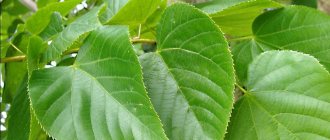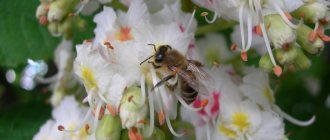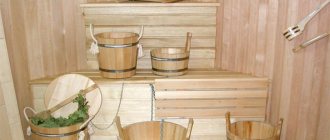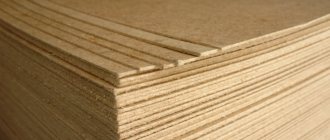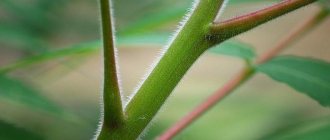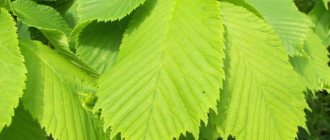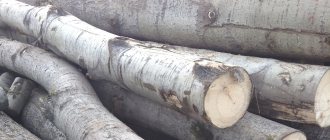Plant themes in the art of body painting are usually divided into male and female. An oak tattoo is a symbol that has powerful masculine energy and personifies strength, courage, and endurance. This is one of the few drawings that does not have ambiguous and uncertain interpretations, and therefore is very popular. Who would be suitable for such a tattoo, what does it tell about its owner?
What it looks like and where it grows
In ancient times, half of all European forests were oak forests. The breed was used as building materials and firewood. Due to deforestation, the area where oak trees grow has decreased significantly and currently accounts for about 3% (in Europe).
The tree has several varieties. Common oak is common in Russia. It is also called petiolate because of its long stalks. This is a forest-forming species that is found in a strip of coniferous and broad-leaved forests, mainly in the European part. It grows with the following crops:
- elm;
- Linden;
- maple;
- ash;
- spruce.
Oak usually forms pure stands only in river floodplains. It prefers the following soils:
- moderately moist forest gray loams;
- degraded chernozems;
- brown soils (in the mountains);
- alluvial soils.
Oak can also be found in the region of Western Europe and the Ural Range. This is a light-loving tree, demanding on soils. The culture does not tolerate overly moist soil.
Culture has its own characteristics. The large tree has a powerful crown and a powerful trunk. The height can reach 40 cm, and the age is 2000 years. However, on average a tree lives about 400 years. Growth (in thickness) continues throughout the entire period of life. Growth in height stops when the tree reaches 200 years.
The oak crown is formed by thick and spreading branches. The bark is characterized by strength. A mature tree can be identified by the dark color of the trunk. The large oblong leaves have rounded teeth. They bloom closer to June. Flowers are represented by dangling earrings. They reach a length of 3 cm.
The fruits are oblong acorns that pigs and wild boars eat. They grow up to 5 cm. In summer, acorns are green. During the autumn months, the fruits gradually turn yellow and then fall off. Beautiful hats have a smooth surface. There are bitter slices inside.
Oak trees bloom at the age of 40 and sometimes 60 years. It is noteworthy that this period coincides with the appearance of shoots. Thus, flowering and leafing occur in May.
Oak acorns ripen by October
Who is the tattoo suitable for?
The main meaning of the oak tattoo in the modern art of body painting is male strength and fertility, because it is from a tiny acorn that such a huge tree grows. The drawing is suitable for self-confident representatives of the stronger sex, hardy and brave, who want to emphasize their physical strength and power. Oak symbolizes immortality and longevity. It is believed that its image can prolong the life of its owner and activate internal energy.
By choosing such a drawing, a person, as it were, takes on the qualities inherent in this image.
The oak tattoo is also interpreted as a connection with ancestors, a return to origins, respect and veneration of one’s family. It was not for nothing that in the Middle Ages the tree symbolized noble origin. Images of acorns were embroidered on clothes by nobles and kings to emphasize their high social status and long-term reign. In modern tattoo art, a tattoo indicates not so much status as love for family, warm relationships with loved ones and relatives.
Despite the fact that the oak tree is a male symbol, girls can also choose oak leaves or acorns for their tattoo. The meaning of the picture remains unchanged - fertility, longevity, vital energy. In addition, it is believed that such a tattoo can attract wealth, material wealth, luck and success in endeavors, so the body decoration is also a talisman. Acorns with leaves will help develop creativity and achieve success in your career or study.
What are the benefits of oak leaves?
The raw materials are intended for internal and external use. The use of products made on the basis of blanks contributes to:
- healing of cuts and minor wounds, ulcers;
- improving stomach function, as well as eliminating gastritis and colitis;
- treatment of gynecological pathologies;
- decreased blood pressure;
- strengthening blood vessels by reducing the risk of cholesterol plaque formation.
Oak leaves have the following effects:
- anti-inflammatory;
- calming;
- anthelmintic;
- hemostatic.
Attention! The beneficial effects of the products on the body are possible only if the recommended dosages are observed.
Oak replanting
When the seedlings get stronger, it’s time to transplant the seedlings to a permanent place of residence, under the open sky, where you plan to grow it to a height of 20 meters.
Determining the readiness of seedlings to change location
A young oak tree is ready for transplantation if:
- The height of the seedling is more than 15 cm and it is much taller than its pot.
- The root system has formed and thanks to it the tree grows.
- The plant has 7-8 formed leaves.
Place to plant oak
Oak trees tolerate replanting well only at an early age. The older the tree, the more likely it is that it will not survive such manipulation. Taking this fact into account, the oak planting site is chosen carefully and responsibly.
The area where the seedling will grow must meet the following requirements:
- Lots of free space. The diameter of the crown and, accordingly, the diameter of the root system of an adult tree can reach 15-20 meters. Powerful roots can damage foundations and communications; this must be remembered.
- Lots of light. The oak is light-loving; it will die in the shade, or it will be difficult to grow it healthy.
- The soil is structured and fertile.
Planting an oak
Planting an oak tree correctly is half the success. First you need to prepare the area. The planting site is cleared of weeds, dug to a depth of 25 cm. Fertilizers are applied (compost, humus, mineral).
Make a hole 70 cm deep, 35-40 cm in diameter. Water it. It is important that the root of the seedling fits completely into the hole. The root system is covered with soil and watered abundantly again. The transplanted oak does not like stagnant moisture, so the soil around it must be compacted so that it slopes away from the trunk.
Methods of preparation and use
Raw materials are used both for the treatment and prevention of gynecological and skin diseases, and pathologies of the digestive system. Dosage forms are characterized by a variety of applications.
Tea
The drink is suitable for daily consumption. However, tea made from oak leaves can bring not only benefits, but also harm. It is not recommended to exceed the recommended dosages, so as not to provoke problems with the digestive tract.
To prepare tea, you need to pour half a liter of boiling water over several sheets. Raw materials are taken both fresh and dried. The product is infused for several hours.
We recommend reading: Tea with thyme: beneficial properties and contraindications
Oak leaf tea is drunk throughout the day to improve well-being.
Decoction
The dosage form is intended for external use. One tablespoon of dry oak leaves is mixed with the same amount of bark and filled with water (200 ml). The composition is boiled for three minutes, cooled and filtered.
A decoction of oak leaves and bark is recommended for use in the form of poultices, lotions and rinses.
Important! They also practice internal administration of healing agents.
Is it possible for humans to eat oak acorns?
In ancient times, these nuts were considered one of the staple foods for people. Today, only Koreans and North American Indians regularly eat them.
Properly prepared oak grains are not only a very tasty product, but also a healthy product. You can only eat ripe brown fruits, which require preliminary soaking and preparation.
Acorns can be used as food, but they must be properly cooked
Nuts have a bitter taste; to eliminate it, they must be processed before cooking. Remove the caps, cut into pieces, peel off the shells, add water and change it until it becomes transparent.
Boiling will also help rid the nuts of tannic acid, but you will have to boil for a long time, constantly changing the water. After this, they are fried, dried or baked in the oven.
Use of oak leaves in folk medicine
Raw materials are actively used in folk medicine. This is due to the beneficial effects of oak leaves in decoctions and infusions.
To improve the functioning of the digestive system
To prepare a healthy drink, take 20 g of raw materials (leaves and bark) and pour 200 ml of boiling water. The composition is covered and simmered for 30 minutes in a water bath. Then the resulting broth is cooled and filtered. It is necessary to restore the previous volume of 200 ml by adding boiled water.
A decoction of oak leaves helps eliminate menstrual pain
For diseases of the oral cavity
Gargling with a decoction of oak leaves is considered an effective way to eliminate diseases of the gums and throat. The drug is effective for the following pathologies:
- stomatitis;
- gingivitis;
- tonsillitis.
Oak leaves and bark are mixed in equal proportions. Take 100 ml of water per tablespoon. The mixture is boiled for several minutes and then filtered. The resulting product is used to rinse the mouth.
Attention! The liquid should be at a comfortable temperature so as not to cause hyperemia.
Gargling the gums and throat with an oak decoction helps eliminate pain.
For sweaty feet
If an unpleasant odor appears regularly, take baths. Take a glass of water for two tablespoons of raw materials (bark and oak leaves). The composition must be boiled for two minutes and left.
Baths with the addition of a decoction of oak leaves and bark help reduce sweating
For hemorrhoids
The use of infusions in the form of enemas is recommended in the presence of nodes. To prepare the medicine, pour four crushed leaves and a small spoonful of bark into a glass of boiling water. The mixture is infused for an hour. The resulting composition can be diluted with water before use.
Enemas with oak leaf infusion also help with peptic ulcers and dysentery
For diseases of the excretory system
It is advisable to treat pathologies of the kidneys and genitourinary tract with means including leaves and oak bark. The raw materials are mixed using a 10:1 ratio and poured with a glass of boiling water. The drink is consumed after it has cooled once a day in the morning.
An infusion made from oak leaves treats cystitis and urethritis.
For varicose veins
For vein diseases, drugs are made for external use. A liter of boiling water is poured into 20 young leaves and 40 g of oak bark. The product is left to infuse for three hours, after which it is poured into the bath. The legs float for 20 minutes.
After warm baths with the addition of oak leaf infusion, you should lie down under a blanket
Chemical composition and calorie content
Acorns have a high energy value, which makes them an important part of the diet. 100 g of product contains about 500 kcal.
Includes:
- glucose;
- fats;
- water;
- carbohydrates;
- retinol;
- proteins;
- vitamin B1 (thiamine);
- calcium;
- zinc;
- iron;
- B6 (pyridoxine);
- ash;
- phosphorus;
- potassium;
- cellulose;
- folates;
- vitamin PP;
- B5 (pantothenic acid);
- glutamine;
- B2 (riboflavin);
- magnesium;
- manganese;
- copper;
- quercetin.
The chemical composition of oak acorns is diverse.
Previously, it was believed that quercetin was a substance toxic to the human body. In large quantities it causes headache, nausea, and severe poisoning. Due to its high content of antioxidants, today it is used in the manufacture of dietary supplements and some medications.
Quercetin in small doses is used in the complex treatment of oncology and arterial hypertension.
Acorns contain essential amino acids (arginine, tryptophan, lysine, phenylalanine), as well as about 60 plant compounds that can protect body cells from damage.
Amino acids that make up acorns
Collection and preparation
Young oak leaves have medicinal properties. The shoots are collected in mid-summer (June, July). During this period they contain the maximum amount of useful substances.
Young trees up to 5 m in height are suitable for harvesting raw materials. They are distinguished by flexible branches and strong shoots. It is advisable to cut the leaves along with them and tie them into peculiar brooms. They are hung to dry in a dark place. Raw materials are stored for about a year.
During this period, it is important to provide fresh air to the dried leaves. The sun's rays provoke the loss of nutrients.
What is an acorn
Nuts are considered to be the fruits of some plants (usually trees or shrubs) covered with a hard shell and an edible kernel. However, botanists do not classify oak fruits as nuts, but consider them as a nut-like fruit called an acorn. The difference from the nut is that the pericarp of the acorn is not so hard, and at the base it is surrounded by a cup-shaped plus with a protective blanket. This shape makes it an indispensable material for hand-made items.
Acorns grow wherever there are trees and shrubs of the beech family; even the chestnut, in fact, is an acorn. However, we consider acorns to be the fruits of oak trees, and there are more than 500 species of them on the planet, and almost all of them are long-lived trees. The growing area is quite wide - almost all of Europe, North Korea, China, western North America.
Oaks are unique trees; they are not only capable of growing from a small acorn, which, when germinating, forms shoots and roots, but young trees also recover quickly from damage. It is thanks to the large supply of nutrients in the acorn that the oak grows quickly during the first 12 months. If a shoot is damaged in the first year of growth, it will grow again each time, but it will no longer grow into a large tree, but will become a thin-trunked tree or will look like a shrub.
The oak begins to bear fruit after 20-50 years of life, depending on the variety. One hectare of oak trees can produce up to 2 tons of mature acorns, changing their color during the ripening period from green to straw yellow and light brown.
Tree care
Any plant on the site needs to be looked after. This is especially true for young seedlings. Caring for young oak includes the following activities:
- Protection from rodents and other herbivores. A mesh fence will solve the problem.
- Preventive treatments with pesticides against attacks by aphids, chafer larvae and other insects that often interfere with the growth of cultivated plants.
- Regular watering. In summer – frequent, in autumn – less abundant.
- Fertilizer application. Nutrition greatly affects the growth rate, so it is applied twice a year. In spring, after the snow melts and at the end of September.
- Oak pruning and the formation of its crown are carried out every two to three years. By pruning, you can achieve a certain crown shape, make the tree more spreading, limiting its upward growth.
Several years will pass, and the mature oak will not require any care, except, perhaps, pruning. It must be carried out extremely carefully. Diseased and dried branches must be removed. It must be remembered that if the crown is very thick, pruning small branches will not save the situation, but will aggravate it, as the oak tree will grow young branches. To make the giant's crown transparent and openwork, it is worth removing 1-2 large branches from its center.
Growing oak trees from acorns will not be a difficult task if you follow the guidelines. The process will be especially interesting for children. Growing an oak tree yourself, watching how a tender root emerges from a hard acorn, and then green palms of leaves stretching out of the ground towards the light is very educational!
Replanting oak from the forest
If you don’t have time to grow a seedling from an acorn, but you want to plant an oak tree on your plot right now, there are two options: buy a seedling at a garden center, or transplant a young tree from the forest.
Replanting a young oak can only be done in the fall, after cool weather sets in. It will be easier for a tree that has slowed down its metabolic processes to take root in a new place.
Before going to the forest, you need to prepare a place for planting a tree, take with you a shovel and material in which the root system will be wrapped during transportation.
So. They came to the grove and looked at the oak tree. Do not take specimens above the knee, since the older the tree, the less likely it is that it will take root well; in addition, the volume of the root system is larger, and it must be dug up without damage and transported to the planting site.
To determine the diameter of the root system, you need to measure the circumference of the trunk and multiply this number by 10. At this distance you can dig without the risk of damaging the roots.
At the new place of residence, the earthen lump is immersed in a prepared hole so that it is 5-6 cm above ground level. In the spring, the soil will settle and the difference will go away. The diameter of the planting hole should be 40 cm larger than the root ball. Provide the oak with supports; they can be removed next summer.
